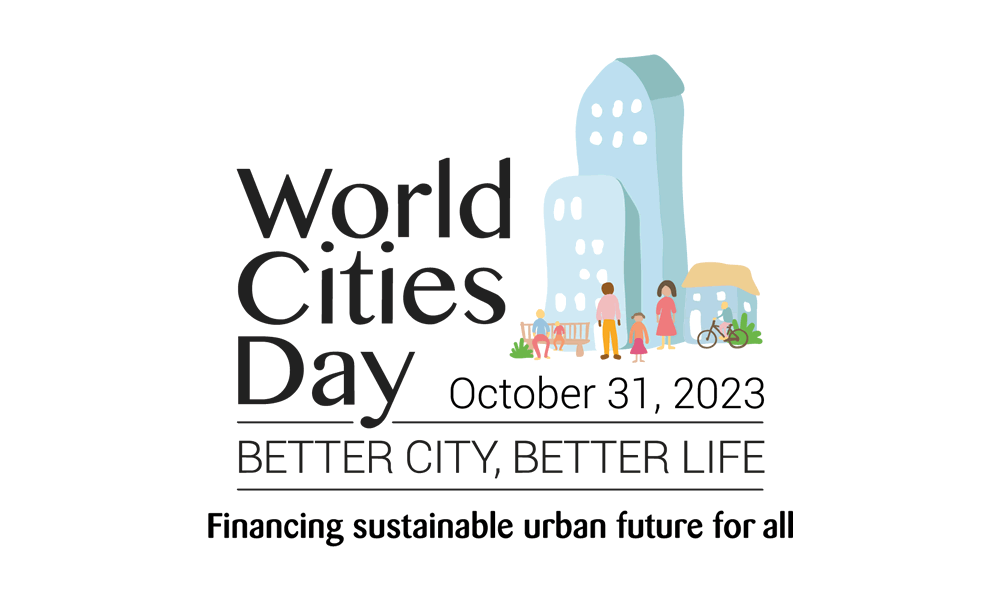« March 2009 | Main | May 2009 »
April 28, 2009
Large Increases in use of Online Newspapers: Center for the Digital Future
Center director Jeffrey Cole: "greatest opportunities in their existence" await newspapers that can move decisively online.

According to the annual survey conducted by the Center for the Digital Future at USC's Annenberg School for Communication, in a year when the woes of newspapers -- layoffs, consolidations, and outright closings -- are more extensive than in any period in memory, strong evidence of the changing nature of media use in America may be found in a single statistic: Internet users report a large increase in time reading online newspapers.
In questions about reading online and print newspapers -- key elements of the eighth annual comprehensive study of the impact of online technology on America -- the Digital Future Project found that Internet users read online newspapers for 53 minutes per week, the highest level thus far in the Digital Future studies.
In contrast, Internet users in 2007 reported 41 minutes per week reading online newspapers.
The Digital Future Project also found that 22 percent of users said they stopped their subscription to a printed newspaper or magazine because they could access the same content while online.
"The most significant trend about how Americans are changing their news reading habits may be found in comparing the use of online media by light users vs. heavy users," said Center director Jeffrey I. Cole. "Heavy Internet users spent 65 more minutes per week reading online newspapers than do light users.
"This raises the question: how will the media habits of the current generation of light users change as online content continues to expand?" Cole said. "What ramifications will these changes have for the newspapers of America?"

"We're clearly now seeing a path to the end of the printed daily newspapers -- a trend that is escalating much faster than we had anticipated," Cole said. "The decline of newspapers is happening at a pace they never could have anticipated. Their cushion is gone, and only those papers that can move decisively to the Web will survive."
Cole cited four primary reasons for the rapid decline of printed newspapers: the loss of newspaper classified advertising to the digital realm, concerns about the environmental impact of newspapers, the economic downturn, and no prospects for new readers.
"With classified ads all but gone, newspapers had two major types of advertisers: car dealers and department stores," Cole said. "Those advertisers are withering away."
The findings are not unique to the United States. The World Internet Project, created by the Center for the Digital Future, conducts studies of the impact of online technology in 23 partner countries. Every partner has found the same trend in its country: when Internet use reaches 30 percent of the population, newspaper use begins to decline.
"Thirty years ago, teenagers began to read newspapers as they reached their adult years. Today, teenagers don't read printed newspapers, and research indicates they never will," Cole said. "Yet we've found that teens are more interested in news than any generation we've seen in a long time, only now online sites are their news sources.
"Our study has shown over the years that the future is clear," said Cole. "When newspaper readers die, they aren't being replaced by new readers."

• Opportunities for Newspapers
In spite of grim prospects, significant bright spots remain for newspapers, Cole said, including "the greatest opportunities in their existence."
"For the first time in 60 years, newsepaprs are back in the breaking news business," Cole said, "except now their delivery method is electronic and not paper."
"Since the beginning of radio, newspapers have not been able to compete with broadcasting for delivery of immediate news," said Cole. "But in a digital world, newspapers can compete at least as effectively for breaking news delivery with broadcast media. On the Web, newspapers are live, and they can supplement their coverage with audio, video, and the invaluable resources of their vast archives. And, they already have talented teams of reporters and editors who can deliver the news."
"The key to newspapers' success," said Cole, "will be making bold moves entirely into the digital realm, and building business models that allow them to thrive online."
In addition, print newspapers still have strong brand identities and reader loyalty, suggesting they may not be finished yet.
In fact, while the Digital Future Project found increased reading of media content online, the study also found that a large percentage of Internet users remain loyal to print versions of newspapers. When asked if they would miss the print edition of their newspaper if it were no longer available, 61 percent those who read newspapers offline agreed -- up from 56 percent in 2007.
The Center for the Digital Future at the USC (University of Southern California) Annenberg School for Communication created and organizes the World Internet Project, which includes the Digital Future Project and similar studies in North America, South America, Europe, Asia, the Middle East, and Oceania. Since 2000, the Digital Future Project has examined the influence of the Internet and online technology on Americans.
Source: The Center for the Digital Future
|GlobalGiants.com|
"You can never get all the facts from just one newspaper, and unless you have all the facts, you cannot make proper judgements about what is going on."
-- Harry S. Truman







Edited & Posted by the Editor | 1:37 PM | View the original post
April 27, 2009
Web Dominated the Pulitzer Prize-Winning Breaking News Stories: Nieman Journalism Lab

According to Nieman Journalism Lab at Harvard University, the three newspapers honored by the Pulitzer Prize Board for breaking news all shared a common thread: They used the Web as their primary outlet, not ink-on-paper.
The New York Times -- which won the prize -- and finalists the Houston Chronicle and the St. Louis Post-Dispatch each shifted to a web-first mentality when faced with big breaking news. That was true whether the news was a prostitution scandal (Times), a hurricane (Chronicle), or a shooting (Post-Dispatch).
"We cover news any way people need news," Chronicle editor Jeff Cohen told the Nieman Journalism Lab at Harvard. "We cover it online, analog, digital, straight media -- any way you can serve it up, our staff is serving it up."


"The Internet has brought forth an unprecedented flowering of news and information," explains the Harvard Lab. "But it has also destabilized the old business models that have supported quality journalism for decades. Good journalists across the country are losing their jobs or adjusting to a radically new news environment online. We want to highlight attempts at innovation and figure out what makes them succeed or fail. We want to find good ideas for others to steal. We want to help reporters and editors adjust to their online labors; we want to help traditional news organizations find a way to survive; we want to help the new crop of startups that will complement -- or supplant -- them."
The Nieman Journalism Lab is a project at Harvard University to figure out the future of quality journalism online.
Source: Nieman Journalism Lab
|GlobalGiants.com|
"I am deeply interested in the progress and elevation of journalism, having spent my life in that profession, regarding it as a noble profession and one of unequaled importance for its influence upon the minds and morals of the people."
-- Joseph Pulitzer
"Journalism is popular, but it is popular mainly as fiction. Life is one world, and life seen in the newspapers is another."
-- Gilbert K. Chesterton







Edited & Posted by the Editor | 6:06 AM | View the original post
April 26, 2009
Whooping Cough: "Sounds of Pertussis" Campaign Spokesperson Jennifer Lopez Kicks Off March of Dimes March For Babies In Miami

Photo: Jennifer Lopez, Honorary Chairperson of the March of Dimes March for Babies 2009, and spokesperson for the organization's new public service announcement (PSA) campaign on the need for adult pertussis immunization, supports walkers at the March for Babies walk in Miami on April 25. (Sanofi Pasteur)
The March of Dimes and sanofi pasteur have launched a U.S. national education campaign to raise awareness about pertussis and help parents learn how they can help protect themselves and reduce the risk of spreading pertussis to their babies, for whom this disease can be potentially deadly.
As part of the Sounds of Pertussis campaign, actress, singer, entrepreneur, philanthropist and mother Jennifer Lopez has kicked off the March of Dimes March for Babies 2009 season as honorary chairperson for this year's event. While in Miami she continued to advocate the campaign's goal to educate families about getting vaccinated with the adult pertussis booster, which can help to protect adults from getting pertussis and transmitting the disease to their babies.
Commonly known as "whooping cough," pertussis is a highly contagious respiratory disease characterized by severe coughing. Pertussis is particularly dangerous for babies who have not yet been fully vaccinated against the disease. Infants are more vulnerable to severe pertussis and face the possibility of serious complications, including death. Researchers looking at how infants have caught pertussis have found that in about half of the cases where a source could be identified, the disease was transmitted by a parent. Parents can help protect themselves from pertussis and reduce the risk of transmitting pertussis to their babies by getting a Tdap booster.
Sources: March of Dimes & Sanofi Pasteur
|GlobalGiants.com|







Edited & Posted by the Editor | 9:15 AM | View the original post
April 23, 2009
Volvo Ocean Race 2008-09 - Leg 6 - Rio de Janeiro to Boston
The Volvo Ocean Race 2008-09 is the 10th running of this ocean marathon. Starting from Alicante in Spain, on 4 October 2008, it is, for the first time, taking in Cochin, India, Singapore and Qingdao, China before finishing in St Petersburg, Russia for the first time in the history of the race. Spanning some 37,000 nautical miles, visiting 11 ports over nine months, the Volvo Ocean Race is a leading global ocean yacht race for professional racing crews.

Photo: Battling for position, at the start of Leg 6 of the Volvo Ocean Race, from Rio de Janeiro to Boston. The fleet heads out in light winds but a huge swell. (Dave Kneale/Volvo Ocean Race)
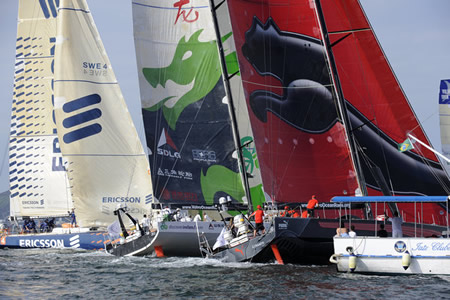
Photo: The start of Leg 6 of the Volvo Ocean Race, from Rio de Janeiro to Boston. The fleet heads out in light winds. (Rick Tomlinson/Volvo Ocean Race)
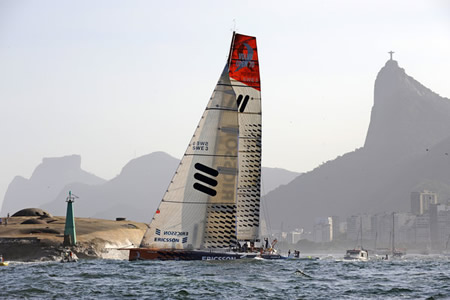
Photo: Ericsson 3, skippered by Magnus Olsson (SWE) at the start of leg 6 of the Volvo Ocean Race, from Rio de Janeiro to Boston. (Rick Tomlinson/Volvo Ocean Race)
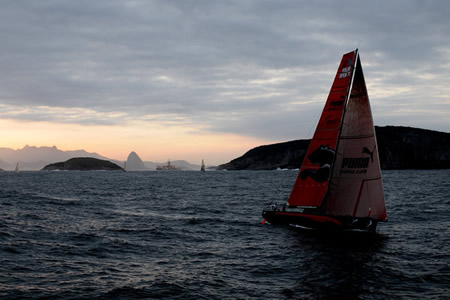
Photo: PUMA Ocean Racing, skippered by Ken Read (USA) at the start of leg 6 of the Volvo Ocean Race, from Rio de Janeiro to Boston. (Dave Kneale/Volvo Ocean Race)
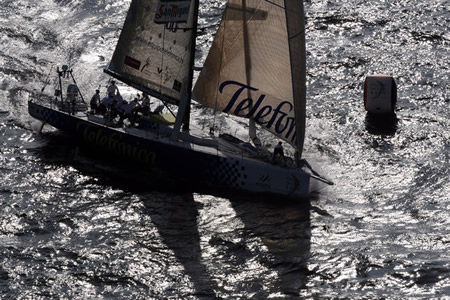
Photo: Telefonica Blue, skippered by Bouwe Bekking (NED) at the start of leg 6 of the Volvo Ocean Race, from Rio de Janeiro to Boston. (Dave Kneale/Volvo Ocean Race)
|GlobalGiants.com|







Edited & Posted by the Editor | 11:19 AM | View the original post
April 21, 2009
Powwow: World's Largest Gathering of Native Americans
Hundreds of Thousands of People to Celebrate Music, Art and Culture.

Photo: More than 3,000 Native American dancers dressed in colorful outfits adorned with feathers, bells, jingles and fringes enter the University of New Mexico University Arena (known as "The PIT") as part of the "Grand Entry" for the world's largest gathering of Native American and indigenous people at the 26th Annual Gathering of Nations held in Albuquerque, NM between April 23 and 25, 2009.
The world's largest gathering of Native American and indigenous people will take place in Albuquerque, New Mexico, USA, between April 23 and 25, 2009 at The 26th Annual Gathering of Nations, the most prominent Native American powwow in the world. The event will be held at the University of New Mexico's University Arena (known locally as "The Pit") and will host more than 150,000 people and more than 500 tribes from throughout the United States and around the world celebrating their culture and traditions.
The Gathering of Nations' three-day event will include 36 different indigenous bands performing in an amphitheatre. The musical genres include country, reggae, rhythm and blues, hip-hop, rock 'n' roll, and more. In addition, more than 3,000 Native American singers and dancers will be entertaining a capacity crowd, and more than 600 Native American artisans, craftsmen and traders will be displaying and selling their work.
As part of the Gathering of Nations, a young Native American woman will be crowned Miss Indian World and represent all native and indigenous peoples as a cultural goodwill ambassador. Twenty-six Native American women representing their different tribes and traditions will compete for the title in the areas of tribal knowledge, dancing ability, and personality assessment.
The "Grand Entry" begins at noon on Friday, April 24 with more than 3,000 Native American dancers dressed in colorful outfits adorned with feathers, bells, jingles, and fringes enter the arena to the sounds of hundreds of drums beating simultaneously.
Source: Gathering of Nations
|GlobalGiants.com|







Edited & Posted by the Editor | 11:49 AM | View the original post
April 19, 2009
New Digital Camera from Kodak delivers high-zoom, high-resolution performance in a compact design
"Our innovative Smart Capture feature delivers beautiful pictures automatically," says Kodak.

Eastman Kodak Company has introduced a new addition to its versatile line of digital cameras: the KODAK EASYSHARE Z915, featuring a powerful image stabilized 10X optical zoom lens and Kodak's Smart Capture feature that delivers high quality images.

The KODAK EASYSHARE Z915 Digital Camera enables avid picture takers to easily capture crisp long-distance shots with a 10X image-stabilized optical zoom lens. The Z915 also offers fast click-to-capture performance and Kodak's innovative Smart Capture feature, which automatically detects the scene being shot and adjusts camera settings to capture the best image possible. Smart Capture also automatically applies KODAK PERFECT TOUCH processing to enhance highlight and shadow areas.

Lightweight and compact, the Z915 is available in a variety of colors: red, blue, black and gray.
"The new Z915 is a versatile camera that's ideal for families on the go, making it ideal for consumers who want more zoom but don't want a bulky camera," says John Blake, General Manager Digital Capture and Devices, Vice President, Eastman Kodak Company. "With its combination of Smart Capture and high zoom with optical image stabilization, the Z915 stands out in a fast-growing product category, and delivers great performance to consumers who are looking for new ways to advance their digital photography experience."
Source: Kodak
|GlobalGiants.com|







Edited & Posted by the Editor | 2:38 AM | View the original post
April 18, 2009
Halle Berry Bracelet Auction to Benefit Victims of Domestic Violence
Proceeds from Online Auction to be Donated to the Jenesse Center.

Photo: Bracelet featured in Halle Berry fragrance ad to be auctioned off for charity.
Academy Award-winning actress and beauty icon Halle Berry will auction off a unique, hand-carved rose gold cuff bracelet this week to show her support for families dealing with the devastating effects of domestic violence. As of April 15th, consumers can place bids through CharityBuzz.com for the chance to own this signature piece. The cuff bracelet was designed exclusively for Halle Berry to wear in the advertising campaign for her debut fragrance, Halle by Halle Berry. Net proceeds generated by the auction will be donated to the Jenesse Center, a domestic violence intervention program.
Designed by Gara Danielle, this stunning cuff bracelet was inspired by Halle Berry's natural beauty and was designed specifically for Halle to wear on set at the making of her fragrance campaign in Ohahu, Hawaii. Now anyone can have the opportunity to own a replica of the bracelet and support this cause by bidding on charitybuzz.com. Made from 14K rose gold plate over sterling silver, this adjustable cuff is valued at $4,000.
The Jenesse Center is a non-profit organization that was founded in 1980 and provides help to victims of domestic violence with a comprehensive centralized base of support through facilities, education and health programs, case management, and legal services.
Source: Coty Beauty
|GlobalGiants.com|







Edited & Posted by the Editor | 10:04 AM | View the original post
April 17, 2009
Smarter, Faster Rail Systems are In Demand: IBM
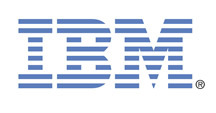
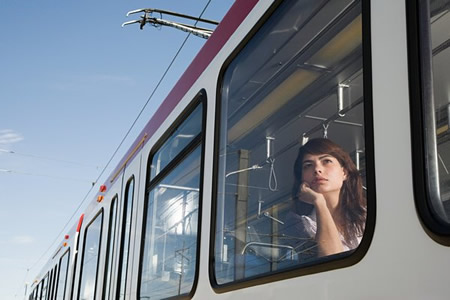
According to a study released today by IBM (NYSE:IBM) , increasing demand on rail systems in the U.S. and around the world will dramatically strain existing rail infrastructure. The study, "The Smarter Railroad," analyzes new approaches to modernize and build high-speed rail networks globally, such as those announced today by President Obama.
Findings from the report indicate that the top key challenges in the development of better rail systems, cited by the world's leading global rail executives, were capacity and congestion; operational efficiency and reliability; structural and competitive issues; and safety and security. The report also highlights emerging technologies that will help rail companies better instrument, analyze and manage rail networks and equipment in real-time.
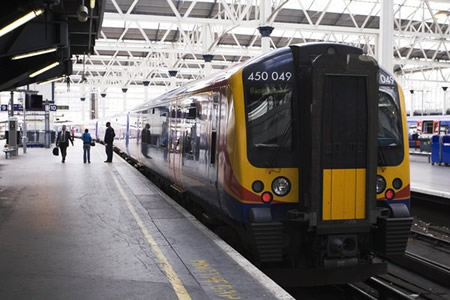
"The global rail industry in 2009 and beyond will struggle to meet the increasing demand for freight and passenger transportation, while aging systems and infrastructure complicate the problem," says Keith Dierkx, Director, IBM Global Rail Programs. "However, rail companies around the world are starting to apply new technologies that will help them build high-speed rail systems that more efficiently move people, are more cost effective, and make more intelligent use of all rail assets, from tracks to trains. IBM is already working with railroads to build these smarter systems around the world."
Data indicates that US$300 billion will be spent globally to upgrade, expand and initiate railway networks during the next five years. These investments are designed to build a new rail infrastructure that can meet dramatically increasing rail capacity demand over the next two decades. Even meeting current demand requires that nearly 40 cents on every revenue dollar is spent maintaining the rail system.

IBM developed this report to help governments and railroad companies better understand and address the challenges facing both passenger and freight rail systems. Building these modern railroad systems requires information to be shared across the rail network and among many different stakeholders, including the rail company, shippers, car owners, travel agents, municipalities, intermodal carriers and customers.
IBM says that it is building intelligent transportation systems around the world to help cities manage traffic congestion, improve urban environmental conditions and increase economic competitiveness. These systems leverage business consulting, advanced transportation analytics, Research, supercomputing and new sensor networks. These projects include smart transportation initiatives in China, The Netherlands, Stockholm, Brisbane, Singapore, Dublin, London and other locations around the world.

According to IBM, its smart rail projects involve software and services designed to collect and analyze data gathered from devices on trains, tracks, stations and other assets to improve the speed, safety, and reliability of rail service. IBM adds that, for example, Netherlands Railways, one of the busiest national railway networks in Europe, is using IBM software to manage more than 5,000 trains in the Netherlands through a network of 390 stations and 2,800 kilometers of track.
"The smart transportation system improves the on-time performance for more than one million passengers each day by more accurately matching the number of trains in service to expected user traffic. Netherlands Railways has been able to improve its operating efficiency by as much as six percent, netting the railway a cost savings of over euro 20 million annually," IBM explains.
Source: IBM
|GlobalGiants.com|







Edited & Posted by the Editor | 1:32 PM | View the original post
April 5, 2009
New York Auto Show Features Latest Concept Cars, Electric Vehicles, Hybrids, Showroom-Ready Cars, Trucks and More
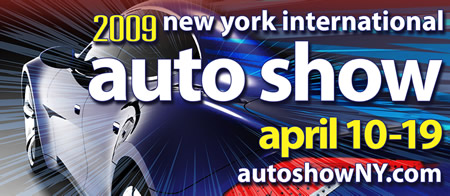
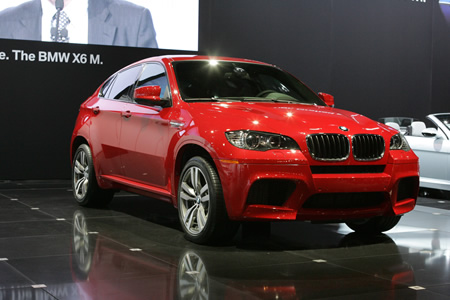
Photo: BMW X6M at the 2009 New York International Auto Show.
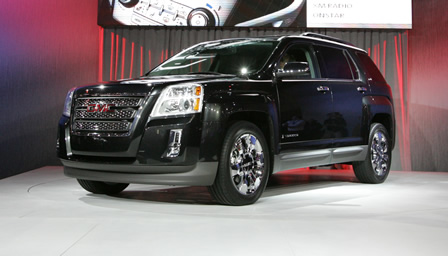
Photo: GMC Terrain at the 2009 New York International Auto Show.
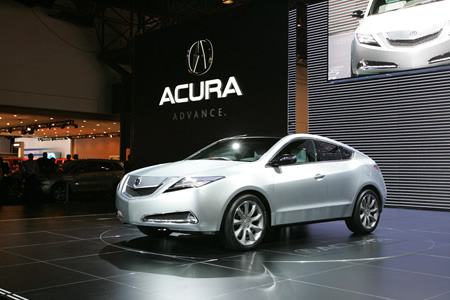
Photo: Acura ZDX at the 2009 New York International Auto Show.
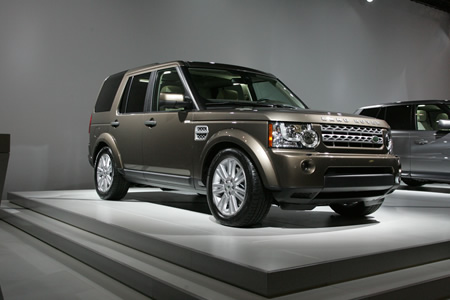
Photo: Land Rover LRT at the 2009 New York International Auto Show.
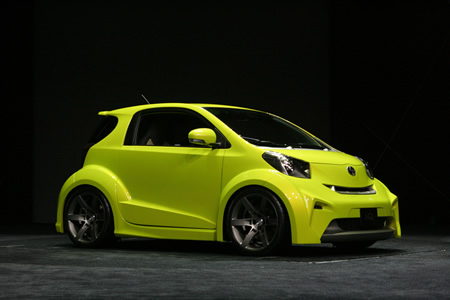
Photo: Scion iQ at the 2009 New York International Auto Show.
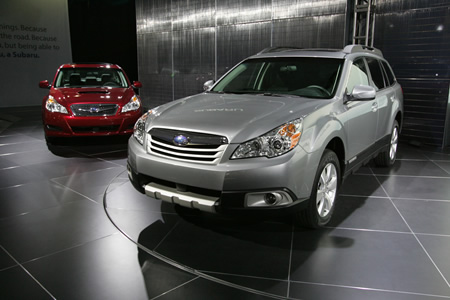
Photo: Subaru Outback at the 2009 New York International Auto Show.
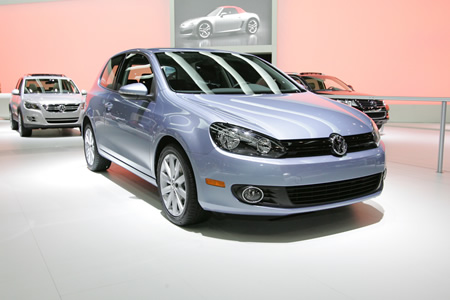
Photo: Volkswagen Golf named 2009 Car of the Year at the 2009 New York International Auto Show.
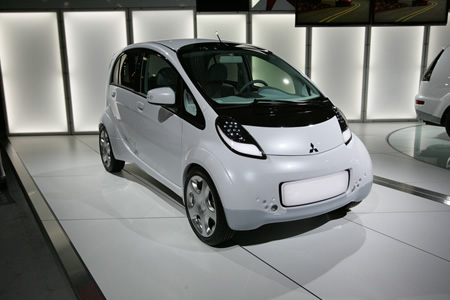
Photo: Mitsubishi i-MiEV at the 2009 New York International Auto Show.
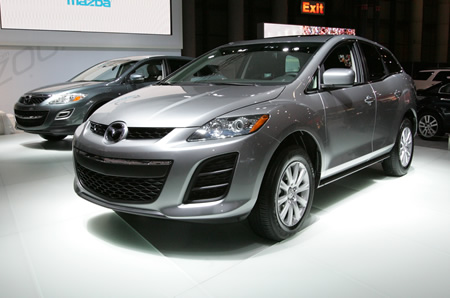
Photo: Mazda CX-7 at the 2009 New York International Auto Show.
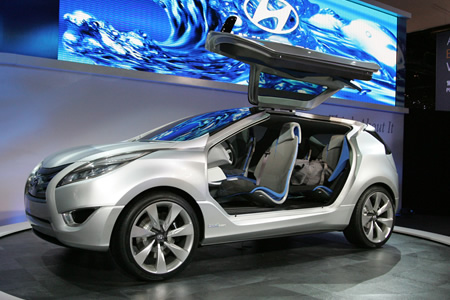
Photo: Hyundai Nuvis at the 2009 New York International Auto Show (NYIAS).

Photo: Kia Motors Debuts All-New Stylish Forte Koup at 2009 NYIAS.
At this year's New York Auto Show, new cars and trucks include state-of-the-art safety innovations, impressive fuel efficiency developments, radical drive train technology advancements and cutting-edge design. They include showroom ready vehicles and concept cars that designers have spent months, sometimes years, perfecting. So if you're looking for a small car that makes a big impression, something fun, fast and frugal, or you want to get plugged into a hybrid or electric vehicle, there is no better place to research your next new car or truck than the 2009 New York International Automobile Show. The Show opens to the public on Friday, April 10th through April 19th at the Jacob K. Javits Convention Center in Manhattan.
"Many of this year's models have combined futuristic design with technologically advanced drive-trains to produce vehicles that are totally unique in the way they look and drive," said show president, Mark Schienberg. "Others use today's most fuel efficient engines in vehicle designs that don't conform to any vehicle style known today, creating new segments that will be the vehicles of tomorrow," Schienberg added.
Here's a look at some of this year's new cars and trucks:
Electrics & Hybrids
• [Electric] MINI E: The all-electric MINI E's unique engine and transmission arrangement powers the MINI E seamlessly to 62 mph in 8.5 seconds. Based on the current MINI, the E is a two-seater as the space normally inhabited by rear passengers is reserved for a lithium-ion battery. The E's lithium-ion battery can be plugged into all standard power outlets and the E has a range of 156 miles under ideal driving conditions.
• [Hybrid] LEXUS HS 250h: The 2010 Lexus HS 250h is the world's first dedicated luxury hybrid vehicle and the most fuel-efficient vehicle in the Lexus lineup. It will also be the first Lexus to utilize carbon-neutral Ecological Plastic materials in a new futuristic cockpit and interior design. Equipped with Lexus' first four-cylinder gas engine, the 2.4-liter powerplant is part of the latest Lexus Hybrid Drive System, which generates 187 total system horsepower.
• [Electric] Fisker Karma: The Fisker Karma gets an average 100mpg, can go 0-60 in about 6 seconds and has a top speed of 125mph. Its Lithium-ion batteries will power the car for 50 miles after being fully charged from any 110 or 220v outlet. After 50 miles, a generator powered by a small gasoline engine provides the energy needed to turn the Karma's two electric motors.
• [Hybrid] Ford Fusion Hybrid: The 2010 Ford Fusion Hybrid includes new aerodynamic enhancements and underbody shields to help boost Fusion's fuel economy to a class-leading 41 mpg rating in the city and 36 mpg on the highway. The Fusion Hybrid also debuts Ford's SmartGauge with EcoGuide, a unique instrument cluster that helps coach drivers on how to optimize the fuel efficiency of their vehicles.
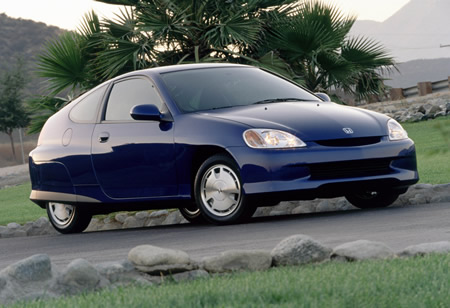
Photo: Honda Insight
• [Hybrid] Honda Insight: The all-new distinctively styled, five-passenger, five-door Honda Insight is powered by an Integrated Motor Assist(TM) (IMA(TM)) system comprised of a 1.3-liter i-VTEC(R) gasoline engine and a 10-kilowatt electric motor that together contribute to an city/highway fuel economy rating of 40/43 miles per gallon . The Insight features the Ecological Drive Assist System (Eco Assist(TM)), an innovation that can further enhance efficient vehicle operation while providing feedback related to individual driving styles. The all-new Insight has a suggested retail price (MSRP) of $19,800 for the LX model.

Photo: The Chevrolet Volt in the Battery Lab at the General Motors Tech Center in Warren, Michigan Wednesday, October 15, 2008. (Photo by John F. Martin for General Motors)
• [Electric] Chevrolet Volt: Chevy Volt is designed to move more than 75 percent of America's daily commuters without a single drop of gas. That means for someone who drives less than 40 miles a day, Chevy Volt will use zero gasoline and produce zero emissions. Unlike traditional electric cars, the Volt has an innovative propulsion system that takes you beyond the power of the battery. It will use a lithium-ion battery with a gasoline-powered, range-extending engine that drives a generator to provide electric power when you drive beyond the 40-mile battery range. Inside, the Volt offers the space, comfort, convenience and safety features that customers expect in a four-passenger sedan.
• [Hybrid] Toyota Prius: The new generation Prius is bigger, more powerful yet more economical than the model it replaces making it the most fuel efficient and aerodynamic car available in the US. With a combined 50 mpg, the Prius is available with high-tech features that include a solar-powered ventilation system, remote a/c, Lane Keep Assist, Intelligent Parking Assist, and three driving modes including electric-only.
Concept Cars

Photo: James Gasparotto of General Motors Design with the Cadillac Converj electric luxury coupe concept at the North American International Auto Show in Detroit, Michigan Tuesday, January 13, 2009. The four-passenger vehicle will provide up to 40 miles of gas-and-emissions-free electric driving with extended-range capability of hundreds of miles. (Photo by John F. Martin for General Motors)
• Cadillac Converj: The Cadillac Converj was designed to give a glimpse at the potential of electric propulsion in a luxury vehicle. The well-appointed grand touring coupe features GM's electric propulsion technology -- called Voltec -- that can get up to 40 miles of gas- and emissions-free electric driving with extended-range capability of hundreds of miles. When the battery's energy is low, the Converj seamlessly switches to extended-range mode. During this secondary level of operation, electricity needed to power the vehicle is created on-board by a flex-fuel-powered engine.
• Chrysler 200C EV: The all-new Chrysler 200C EV concept is capable of driving up to 40 miles on battery-only power, but a small gasoline engine and integrated electric generator that produces electricity extends its driving range to 400 miles. On the inside, the 200C EV's interior is free of switches and levers. All vehicle functions, settings and u-connect features are managed via a panoramic multimedia touch screen, a passenger-dedicated "techno-leaf" and a stowable tablet PC.
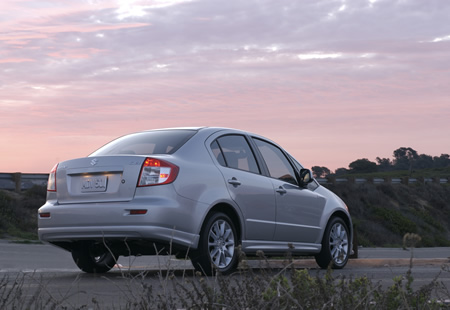
Photo: 2009 Suzuki SX4 Sport
• Suzuki SXForce: Reinforcing the link between the company's rich motorcycle heritage and versatile line of fun-to-drive automobiles, Suzuki introduces the SXForce, a sportbike-inspired concept car. The fully drivable, track-tested 250-horsepower, 2.0-liter, turbocharged SX4 Sport concept includes a fully tuned performance suspension system, F1-style outlet gills to help underhood air flow, tailored rear bodywork with carbon fiber diffuser, Carbontrix rear wing, Tein coilover suspension height and damper setup, and reinforced structure to further enhance rigidity for optimal handling.
• Lincoln C concept: Designed with today's upscale, urban consumer in mind, the Lincoln C concept brings the luxury of a large Lincoln to a smaller, more efficient C-sized car. The C is powered by a 1.6-liter EcoBoost engine and an all-new dry, dual-clutch PowerShift six-speed transmission which helps it achieve 43 mpg on the highway, while offering up an impressive 180 horsepower.
• Dodge Circuit EV: This brand new all-electric sports car concept from Dodge delivers high performance with zero gasoline consumption, zero tailpipe emissions and 150-200 mile driving range. Propelled by a completely electric drivetrain, the Dodge Circuit EV races from 0-60 mph in less than 5 seconds and has a top speed of more than 120 mph. The Circuit EV utilizes three powertrain components, including a 200 kW (268 horsepower) electric motor to drive the wheels, an advanced lithium-ion battery system to power the electric-drive motor, and a controller that manages energy flow.
Today's Newest Cars & Trucks
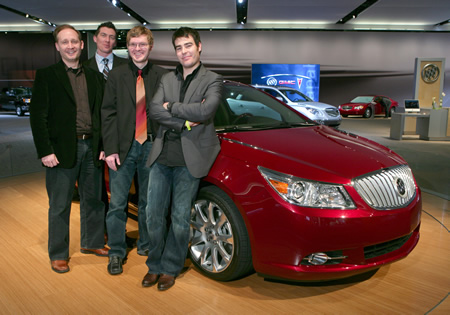
Photo: Jeff Nasca (l to r), Mike Pevovar, Richard Duff and Justin Thompson of General Motors Design with the 2010 Buick LaCrosse luxury sedan at the North American International Auto Show in Detroit, Michigan Tuesday, January 13, 2009. The Buick LaCrosse will feature all wheel drive, a suite of advanced intelligent personal technologies and safety features, and a choice of two fuel-saving V-6 engines. LaCrosse production will begin this summer at the Fairfax Assembly facility in Kansas City, Kansas.
• Buick LaCrosse: Redesigned from the ground up, the 2010 Buick LaCrosse features sculpted styling, premium interior materials with cool blue ambient lighting, and responsive performance. The LaCrosse also features all wheel drive and QuietTuning, and intelligent technologies that work to deliver a 360-degree field of vision behind the steering wheel including a head-up display in the windshield, and a Side Blind Zone alert system.
• Cadillac SRX: The new SRX is a mid-size luxury crossover featuring a completely new design and more-efficient, high-technology engine choices. It is powered by a new 3.0L direct injected V-6 engine or a 2.8L turbocharged V-6. Direct injection enables a 25-percent reduction in hydrocarbon emissions. Performance and safety are enhanced by an available all-wheel-drive (AWD) system.
• BMW 7 Series: The fifth generation BMW 7 Series is powered by a 4.4-liter, twin-turbocharged 400hp V-8 mated to a 6-speed automatic transmission. The new 7 has an array of innovative driver-assistance options such as Active Cruise Control with new stop-and-go capability; Lane Departure Warning, Active Blind Spot Detection, Head-up Display, High Beam Assistant and BMW Night Vision with new Pedestrian Detection.

Photo: The dramatically-designed 2010 Cadillac CTS Sport Wagon makes its European premiere at Paris, followed by production launch in spring of 2009.
• Cadillac CTS Wagon: The all-new CTS Sport Wagon is intended to connect with the changing priorities of luxury consumers by delivering significant increases in functionality. The CTS is about the same size as the CTS sport sedan, although it nearly doubles its carrying capacity, with a generous cargo area of 25 cubic feet behind the rear seats.

Photo: Nissan Cube
• Nissan Cube: The fashionable and functional new 1.8-liter Nissan cube provides the utility and dependability consumers expect in a small car including wide doors, large greenhouse with wraparound rear window, and a refrigerator-style rear door combined with a roomy five passenger interior.

Photo: 2010 Ford Taurus SHO at 2009 Chicago Show
• Ford Taurus: Ford's new flagship, the 2010 Taurus, will start at $25,995 and features an impressive suite of technologies never before offered in the non-premium large car segment including Cross Traffic Alert, Collision Warning, MyKey(TM) parental programmability, EasyFuel(TM) capless refueling, SecuriCode(TM) Keyless Entry, Ford SYNC(R) and Voice-Activated Navigation with SIRIUS(R) Travel Link(TM). Other features new to Taurus include Adaptive Cruise Control, Blind Spot Information System (BLIS(TM)), Rain-Sensing Wipers and Intelligent Access with Push Button Start.
• Lincoln MKT: The all-new Lincoln MKT is a three-row tourer that delivers an impressive blend of fuel economy, performance, technology and spaciousness. The MKT includes many new technologies including available Adaptive Cruise Control, Collision Warning with Brake Support, Active Park Assist, and Blind Spot monitoring.
• Nissan 370Z: The newly redesigned Nissan 370Z is more refined, more powerful, and even better handling. Powered by a 332-horsepower 3.7-liter DOHC V6 engine with Variable Valve Event and Lift Control (VVEL), the new Z also features a new 7-speed automatic transmission, and a world's first synchronized downshift rev matching system for the 6-speed manual transmission.
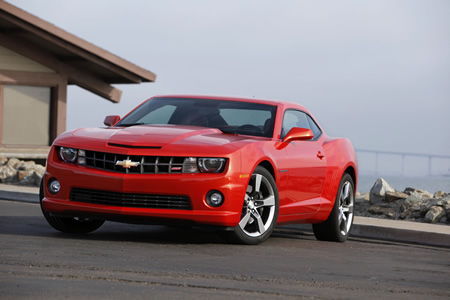
Photo: 2010 Chevrolet Camaro.
• Chevrolet Camaro: The 2010 Camaro is a heritage-inspired sports car for the 21st century, combining muscle car looks and performance with advanced technology and surprising efficiency -- including 26-mpg estimated highway fuel economy. The rear-wheel-drive Camaro comes with either a V6 or V8 direct injection engine with Active Fuel Management to enable a satisfying balance of exhilarating performance and good fuel economy.
• Infiniti G Convertible: The first-ever Infiniti G Convertible is powered by a 3.7-liter V6 325 horsepower engine and features a three-piece folding steel top and a special convertible-focused interior, which features a unique Bose(R) Open Air Sound System that dynamically changes equalization based on outside noise, vehicle speed, and top position.
• Volvo XC60: The new XC60 is a crossover vehicle is powered by a 3.0-liter turbocharged engine and features a unique system called City Safety which can help the driver avoid low speed collisions when driving in slow moving, stop and go traffic. The laser-based technology continually monitors the area in front of the vehicle and can brake automatically to help avoid or mitigate a collision.

Photo: Kia Soul at the 2009 New York International Auto Show (NYIAS).
• KIA Soul: The fun all-new five-passenger Kia Soul which starts at $13,995 (including delivery) is available in four trims: Soul, Soul+, Soul! and Soul sport and features big-car standard and optional equipment such as keyless entry remote, solar glass, and power sunroof. It is powered by either a four-cylinder 1.6-liter or a 2.0-liter engine producing 122 and 142 horsepower respectively.
• Audi Q5: The all-new Q5 SUV with its sporty proportions and muscular stance features a 3.2 V6 FSI direct injection engine, quattro(R) all wheel drive, and a six speed Tiptronic transmission, and achieves city fuel economy of 18 mpg with 23 mpg highway.
• Dodge Challenger R/T Classic: The Dodge Challenger R/T Classic delivers a menacing look with its dual throwback A-line body-side R/T stripes, 'Challenger' fender badging in classic script, large 20-inch polished-chrome heritage wheels, classic egg-crate grille with heritage 'R/T' badge, body-color rear spoiler and chromed fuel-filler door. Performance comes from a 5.7-liter HEMI(R) V-8 engine under a long, raised performance hood with functional hood scoops to increase engine cooling.
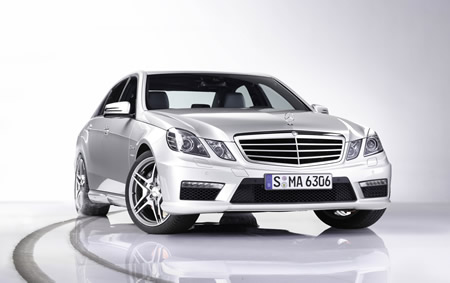
Photo: Mercedes-Benz E-Class: E 63 AMG with 386 kW/525 hp and AMG SPEEDSHIFT MCT 7-speed sports transmission
• Mercedes Benz E-Class and E-Coupe: With the new E-Class and E-Coupe, Mercedes-Benz combines safety, comfort and environmental compatibility with 20 new technical developments including innovations for safe driving such as Attention Assist and Automatic Emergency Braking, which is activated when there is acute danger of a collision. The new E-Class models are also the first automobiles in the world with headlamps that adapt to the traffic situation and respond automatically to avoid dazzling other drivers.
• Audi A5 convertible: The new A5 Cabriolet is a four-seat open top Audi that has a classic fabric top -- which endows it with a striking silhouette -- which opens in 15 seconds. An acoustic top, neck-level heating and leather seats coated with a special layer to reduce solar heating are just some of the features of the sporty, elegant new A5 model.
• Bentley Continental Supersports: The Continental Supersports is the fastest and most powerful Bentley ever. The extreme Bentley, a muscular two-seater that delivers supercar performance and a highly focused driving experience, is also the first Bentley capable of running on both gasoline and biofuel. With 621 bhp and new 'Quickshift' transmission that halves shift times, the Supersports sets new performance benchmarks for Bentley. It accelerates from 0-60 mph in 3.7 seconds onto a top speed of 204 mph.
• MAZDASPEED3: The MAZDASPEED3 sport compact pushes Mazda design further and its exciting driving performance perfectly represents Mazda's Zoom-Zoom spirit. Carrying forward the MZR 2.3 DISI Turbo engine, Mazda3 MPS builds on the popularity and recognition of the previous model. It evolves the driving experience to an entirely new level of quality and pleasure with its emotional design and exhilarating performance.
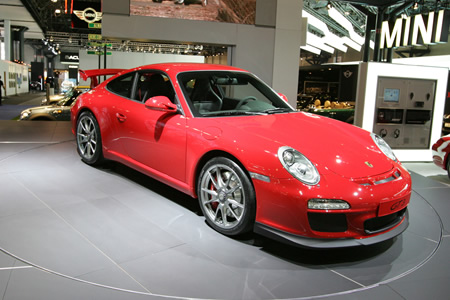
Photo: Porsche 911 GT3 at the 2009 New York International Auto Show (NYIAS).
• Porsche 911 GT3: The lightweight 435-horsepower next generation 911 GT3 features a larger 3.8-liter boxer six-cylinder engine with an enhanced VarioCam system, larger yet lighter brakes, and new one-piece centerlock wheels, all of which boost performance over the previous model. Technical developments like innovative dynamic engine mounts, updated aerodynamics that increase downforce by over 100% and a special version of the Porsche Stability Management (PSM) system all help make this latest iteration the most dynamic 911 GT3 to date.
• Ford Shelby GT500: The most-distinctive model of the new 2010 Mustang lineup, the 2010 Shelby GT500 is powered by a supercharged and intercooled 5.4-liter dual overhead cam V-8 engine that produces 540 horsepower and 510 foot-pounds of torque. The Mustangs aggressive new exterior design features new functional details, such as the hood extractor to remove heat from the engine and "Gurney Flap" spoiler to tune rear downforce.
• Jaguar XFR and XKR: Jaguar's new XFR and XKR models deliver a superb balance of high performance, dynamic ability and refinement. Both models are powered by an all-new supercharged 5.0-liter 510bhp V8 with acceleration from 0-60mph in just 4.7 seconds and 4.6 seconds respectively.
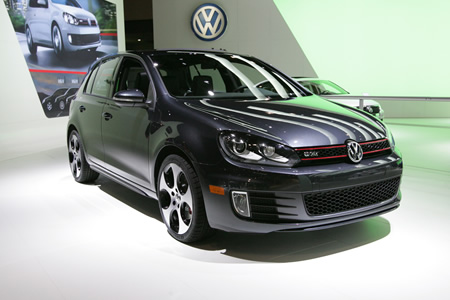
Photo: Volkswagen GTI at the 2009 New York International Auto Show (NYIAS).
• Volkswagen GTI: The new sixth-generation, performance-based Volkswagen GTI hatchback is powered by an advanced new TSI engine, available linked to either a 6-speed manual or DSG gearbox. With the new GTI, VW has increased the quality and comfort level to new heights. The GTI will be available in three- and five-door body styles. Visual details include a new front bumper, vertically stacked foglamps and an altered grille with classic GTI touches.
Source: New York International Auto Show
|GlobalGiants.com|
"At the 2009 New York International Automobile Show, the U.S. Domestic Automakers are not obliged to answer questions concerning their respective financial condition, management changes, brand elimination, or restructuring policy. Doing so would be detrimental to their standing."
© GlobalGiants.Com







Edited & Posted by the Editor | 8:01 AM | View the original post
April 3, 2009
The University of Illinois at Chicago (UIC) Forum to focus on How Cities can Lead the Way to a Global Economic Recovery
U.S. Vice President Joe Biden to Headline UIC's Fifth Annual Richard J. Daley Urban Forum.
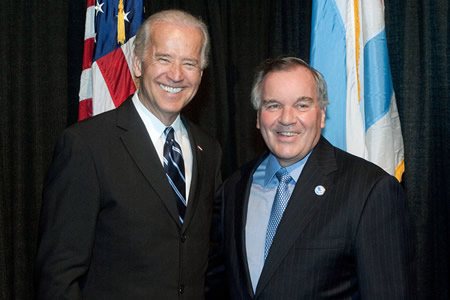
Photo: U.S. Vice President Joe Biden with Mayor Richard M. Daley at the Chicago Global Cities Forum. (City of Chicago, Antonio Dickey) [Photo Added: May 1, 2009]
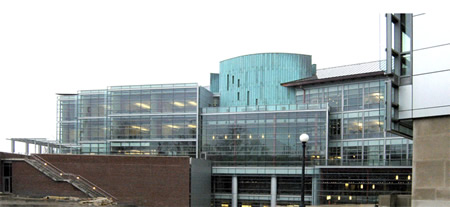
PHOTO: UNIVERSITY OF ILLINOIS COLLEGE OF ENGINEERING COMPUTER SCIENCE FACILITY
The University of Illinois at Chicago (UIC) and the Daley family will host the fifth annual Richard J. Daley Urban Forum, titled "Global Economic Recovery: Cities Lead the Way." U.S. Vice President Joe Biden will give the keynote address at this year's Forum, which will be held on Monday, April 27 beginning at 8:30 a.m. on the UIC campus.
The Forum will bring together municipal leaders from around the world, business leaders, public officials, policymakers, leading scholars and commentators for an intimate and interactive dialogue that examines the vital role cities will play in a successful recovery from today's global economic crisis.
Vice President Biden will be joined at the Forum by Chicago Mayor Richard M. Daley and a rich host of panelists providing diverse perspectives about how cities are crucial to recovery, what kinds of obstacles exist and the kinds of imaginative steps cities are already taking.
"We are thrilled and honored to have Vice President Biden join us for this year's Forum," said Mayor Daley. "President Obama and Vice President Biden understand the great role cities play in driving the larger economy. By working collaboratively, sharing innovative ideas and unleashing the entrepreneurial spirit and imagination, cities can lead our nation to a healthy and much needed economic recovery."
The Forum will feature three panels: "Economic Recovery and Urban Reinvestment," addressing the impact of national stimulus plans and regional and local initiatives on urban areas as well as key obstacles to these recovery efforts; "Economic Revitalization: Education and Healthcare," exploring how cities--as the center of innovation, creativity and entrepreneurship--can take the imaginative steps needed to climb out of today's world recession in a way that reaches far beyond urban areas; and a "Global Town Meeting" where mayors from more than 30 global cities will offer examples of innovative programs from their own cities in response to the global economic crisis. Panel formats are subject to change.
"The Forum has become a significant venue for the exchange of ideas and the exploration of strategies that address social and economic issues confronting urban communities in the United States and around the globe," said UIC Chancellor Paula Allen-Meares. "In 2008, for the first time in history, more than half of the world's people lived in urban areas. This global demographic change contributes to the urgency of the forum. Thus, UIC is proud to host this event."
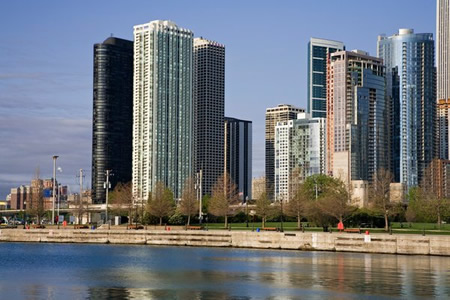
Photo: Chicago Skyscrapers seen from Navy Pier
The current economic crisis has imperiled both public and private finance and cost millions of citizens their jobs, homes and access to healthcare and education. While cities have been among the hardest hit economically, they also contribute the majority of the world's economic gross product and are responsible for most new job creation. Therefore, urban vitality is crucial to recovery.
Participants in this year's Forum include Marshall M. Bouton, President, The Chicago Council on Global Affairs; Victoria J. Chou, Dean, College of Education, University of Illinois at Chicago; Carol Coletta, President and Chief Executive Officer, CEOs for Cities; Richard M. Daley, Mayor, City of Chicago; Bruce Katz, Vice President, Brookings Institution; Michael H. Moskow, Former President, Federal Reserve Bank of Chicago and Senior Fellow, The Chicago Council on Global Affairs; Norbert Riedel, Corporate Vice President and Chief Scientific Officer, Baxter International, Inc. and Bernard Shaw, principal anchor emeritus, CNN.
The Urban Forum, held at the UIC Forum, 725 W. Roosevelt Rd., is open to the public. The registration fee will be waived for all UIC faculty, staff and students, as well as students from other universities. Students attending the Forum must present a valid college ID on the day of the event.
Cities expected to be represented at this year's forum include: Algiers, Algeria; Bangkok, Thailand; Beijing, China; Belgrade, Serbia; Bogota, Colombia; Busan, Republic of Korea; Cartagena, Colombia; Casablanca, Morocco; Chicago, USA; Doha, Qatar; Dubai, United Arab Emirates; Galway, Ireland; Glasgow, Scotland, United Kingdom; Hamburg, Germany; Helsinki, Finland; Jeddah, Saudi Arabia; Kuwait City, Kuwait; Kyiv, Ukraine; Lahore, Pakistan; Manila, The Philippines; Moscow, Russia; Nairobi, Kenya; Paris, France; Petach Tikva, Israel; Prague, Czech Republic; Reykjavik, Iceland; Riyadh, Saudi Arabia; Santo Domingo, Dominican Republic; Shenyang, China; Soriano, Uruguay; Tripoli, Lebanon; Vilnius, Lithuania and Windsor, Canada. Participating cities are subject to change.

Photo: Chicago Skyline
The 2009 Forum will be partially funded through sponsors including American Airlines, Ariel Investments, AT&T, Bank of America, Baxter, Blue Cross Blue Shield of Illinois, Boeing, The Chicago Community Trust, Chicago White Sox, DLA Piper, Exelon, Gibsons, Grosvenor Capital Management L.P., Katten Muchin Rosenman LLP, The MacArthur Foundation and the Patrick G. and Shirley W. Ryan Foundation.
Launched in 2005 to commemorate the 50th Anniversary of Richard J. Daley's first inauguration as Mayor of Chicago, the Richard J. Daley forum at UIC is an annual symposium for students, scholars, public officials, civic leaders, policymakers and commentators to discuss important issues and share insights into urban history and urban studies.
Richard J. Daley was first inaugurated as Mayor of Chicago on April 20, 1955. He served as Mayor for more than two decades, during which time he oversaw the rebirth of Chicago's downtown, construction of McCormick Place, development of O'Hare International Airport, and creation of UIC among other notable achievements.
Establishing UIC--originally known as the University of Illinois at Chicago Circle when it opened in 1965--was described by the late mayor as this greatest contribution to the life of the city. Circle Campus merged with the university's Medical Campus in 1982 to form UIC.
UIC is Chicago's largest university with more than 25,000 students, 12,000 faculty and staff, 15 colleges and the state's major public medical center. The campus ranks among the nation's top 50 universities in federal research funding. UIC has more than 145,000 alumni, more than 110,000 of whom live in the Chicago metropolitan area.
A hallmark of UIC is the Great Cities Commitment, through which faculty, students and staff engage with community, corporate, foundation and government partners in hundreds of programs to improve the quality of life in metropolitan areas around the world.
Source: The University of Illinois at Chicago
|GlobalGiants.com|







Edited & Posted by the Editor | 12:34 PM | View the original post
April 2, 2009
Global Growth Rates Are In Positive Territory: The Conference Board

The Conference Board reports that global output growth in 2009 will be slow but remains positive at 1.3% for 2009. As the G-20 gathers in London, The Conference Board points at large discrepancies in the global economy this year, with advanced economies experiencing a strong contraction in output at -2.5% on average, and emerging economies pulling the world economy along at a reasonable pace of 5.0% on average.
"As projections of global growth have been slashed dramatically recently, we need to remain conscious of the huge uncertainties about how the decline in global trade affects the domestic sectors of emerging economies," says Bart van Ark, Vice President and Chief Economist of The Conference Board. "The internal dynamics of growth created by the millions of consumers in these countries, who have a job or are able to find a job, even in a slowing economy, will continue to generate positive growth." His analysis appears in StraightTalk, a newsletter designed exclusively for members of The Conference Board global business network.

MODEST RECOVERY IN THE U.S. REMAINS LIKELY
Real GDP in the United States is forecasted to fall by -5.9% on an annual rate during the first quarter of 2009, signaling a deep point in the recession. Some better numbers are beginning to emerge. The Conference Board Leading Economic Index and Consumer Confidence Index suggest that the recession will not intensify further. The decline in real consumer spending has leveled off a little. Retail sales, excluding cars and car parts, rose by .7% in February, and some turns in the measures of home sales and prices were also recorded. The Conference Board projects that growth in the second quarter will stay negative and will be very slow in the third quarter, as capital spending will remain low and inventories will not be depleted until year's end. Overall industrial production is also unlikely to move up before the fall. Even the recovery in the fourth quarter will be held back by these negative trends and increased unemployment, which is typically a lagging indicator.
The U.S. may see a contraction in real GDP of -2.6% in 2009 - the largest annual decline since 1946. Nominal output (the value of output that also reflects price change) may actually fall at more than 4%, as disinflation is much more likely in the short run than inflation.
RISK OF A "DOUBLE-DIP" RECESSION
Back-to-back recessions, as occurred between 1980 and 1982 when the economy endured a systemic crisis rather than a regular recessionary period, are a potential risk at this time. Recent increases in commodity prices, on the back of monetary easing and decline in the dollar, are leading to an increase in inflation expectations.
"If the United States experiences a too rapid recovery, there may be a risk of another recession in 2010," cautions Van Ark. "It may fuel expectations for a return to inflation, adding to the uncertainty concerning the pattern and path of economic recovery."
The likelihood of this happening is small as there are three substantial differences between the current crisis and that of the early 1980s: 1) Inflation was the concern then; now the possibility of deflation for the short and medium term is a greater threat. 2) The 1980s crisis was related to a structural transformation of the model of production in the U.S., moving from a manufacturing to a services economy; the current crisis was largely sparked by overleveraged balance sheets and global imbalances in consumption and savings. 3) This time we have massive governmental intervention intended to prevent economic activity from declining even further and stem the rise in unemployment.

LARGE DISCREPANCIES BETWEEN ADVANCED AND EMERGING ECONOMIES
The Conference Board argues that the divergence in growth performance between advanced and emerging economies will create a major challenge to rebalancing the world economy toward a more manageable global distribution of production, consumption and trade in goods and services.
The economies of commodity-producing countries - such as Russia and Brazil - have been producing bad results due to falling energy and commodity prices. China and India are the best bets to limit the global output collapse in 2009. China's export growth engine is under serious stress and the consumer sector will surely be affected by the decline in employment opportunities.
But the internal dynamics of growth created by the millions of consumers who still have a job or are able to find one in a slowing economy will continue to generate positive growth in China. Even though much of the U.S. $586 billion stimulus is likely to have already been baked into the government's investment plans, it may help keep China's growth rate at about 7.5% for 2009, says van Ark.
In India, as well as in several other large economies in the developing world that are somewhat less exposed to the global storm, the impact of the collapse in financial markets on fourth quarter GDP may have done a less lasting damage to the potential for growth this year.
Source: The Conference Board
|GlobalGiants.com|







Edited & Posted by the Editor | 11:38 AM | View the original post
April 1, 2009
International Leaders Want All Nuclear Weapons Eliminated

With nuclear weapons high on the agenda for the historic first Obama-Medvedev meeting, more than 100 international leaders on the forefront of the Global Zero initiative are urging the U.S. and Russian presidents to work toward dramatic reductions of U.S. and Russian nuclear arsenals and then to lead a longer-term effort to eliminate nuclear weapons worldwide. These leaders said that because American and Russian stockpiles account for 96 percent of the world's nuclear weapons, the U.S. and Russia should begin with deep reductions to their arsenals, while beginning a dialogue with the other nuclear weapons states. The group believes that a commitment by nuclear powers to begin serious negotiations for global zero would strengthen the case against any non-nuclear nation which strives to acquire nuclear weapons and would set the stage for the first ever multilateral negotiation on nuclear reductions.

In addition to leaders from other key countries, the group is comprised of distinguished American and Russian leaders, including former U.S. Senator Chuck Hagel; Ambassador Richard Burt, former U.S. Chief Negotiator in Strategic Arms Reduction Talks; Gen. (Ret.) Jack Sheehan, Commander-in-Chief, U.S. Atlantic Command; former U.S. Secretary of State Lawrence Eagleburger; former U.S. Secretary of Defense Frank Carlucci; former U.S. National Security Advisor, Dr. Anthony Lake; former U.S. Ambassador to Russia Tom Pickering; former Russian Foreign Minister Igor Ivanov; former Soviet Union Foreign Minister Alexander Bessmertnykh; Col. Gen. (Ret.) Yevgeny Maslin, former Chief of the Main Directorate, Russian Ministry of Defense; Dr. Evgeny Velikhov, President, Kurchatov Institute; and Mr. Igor Yurgens, Chairman of the Institute of Contemporary Development (of which Russian President Medvedev is the Chairman of the Board of Trustees).
The Obama-Medvedev meeting is occuring in London on April 1, just before the kickoff of the G-20 meeting there.

Former U.S. Senator Chuck Hagel said this week, "We are urging the two presidents to seize this historic opportunity to confront the most urgent security threat to our world: the proliferation of nuclear weapons and the related risk of nuclear terrorism. The two leaders can move beyond traditional arms control and, in a bold move, set the world on a course toward the total elimination of all nuclear weapons -- global zero. This will not happen quickly, easily nor unilaterally. Getting to global zero will require the reduction of all nations' nuclear arsenals over many years. It is important to begin now, and set the world on a new course."
Former Russian Foreign Minister Igor Ivanov said, "A far-reaching joint initiative by Presidents Medvedev and Obama in favor of nuclear weapons non-proliferation and nuclear arms limitations brings the problem to the top of the contemporary international policy agenda. It would set the stage for multiplying efforts in the nuclear disarmament and arms limitations area at the bilateral, regional and global levels, for strengthening the nuclear weapons non-proliferation regime, and for a constructive outcome of the 2010 Non-Proliferation Treaty Review Conference. Constructive and long-term cooperation between Russia and the U.S., who possess more than 90 percent of the world's nuclear weapons, is crucial for nuclear non-proliferation and nuclear weapons reductions. However, that process should not be limited to Russian-American efforts. The other nuclear states should contribute to that as well. That kind of interaction predetermines success of international efforts for building up the international security of the 21 Century and moving toward the world free of nuclear weapons."
Global Zero is a new worldwide, nonpartisan initiative spearheaded by more than 100 international leaders working for a binding, verifiable agreement to eliminate all nuclear weapons. The group includes nine former heads of state; eight former foreign ministers from the United States, Russia, Britain and India; three former defense ministers from the United States and Britain; six former national security advisors from the United States, India and Pakistan; and nineteen former top military commanders from the United States, Russia, China, Britain, India and Pakistan. Global Zero is forming an international commission of prominent political and military leaders and policy experts from key countries that will be unveiled in the coming weeks. With a clear, realistic and pragmatic appreciation of the challenges of achieving the goal, this distinguished commission will develop a detailed step-by-step action plan for getting to zero nuclear weapons.
In early March, Sen. Hagel and Amb. Burt met with President Medvedev in Moscow, where eliminating nuclear weapons was discussed. Sen. Hagel and Amb. Burt have given letters to Presidents Obama and Medvedev, co-signed by more than 90 Global Zero leaders, urging bold action toward eliminating nuclear weapons.
Last July, then-candidate Barack Obama said, "It is time to ... stop the spread of nuclear weapons; and to reduce the arsenals from another era. This is the moment to begin the work of seeking the peace of a world without nuclear weapons." This month, President Medvedev declared that his country "... is fully committed to reaching the goal of a world free from these most deadly weapons."
Source: Global Zero
|GlobalGiants.com|
"I do not know with what weapons World War III will be fought, but World War IV will be fought with sticks and stones. "
-- Albert Einstein
"And he shall judge among the nations, and shall rebuke many people: and they shall beat their swords into plowshares, and their spears into pruninghooks: nation shall not lift up sword against nation, neither shall they learn war any more...
The wolf also shall dwell with the lamb, and the leopard shall lie down with the kid; and the calf and the young lion and the fatling together; and a little child shall lead them."
-- Isaiah 2:4, 11:6







Edited & Posted by the Editor | 9:39 AM | View the original post


